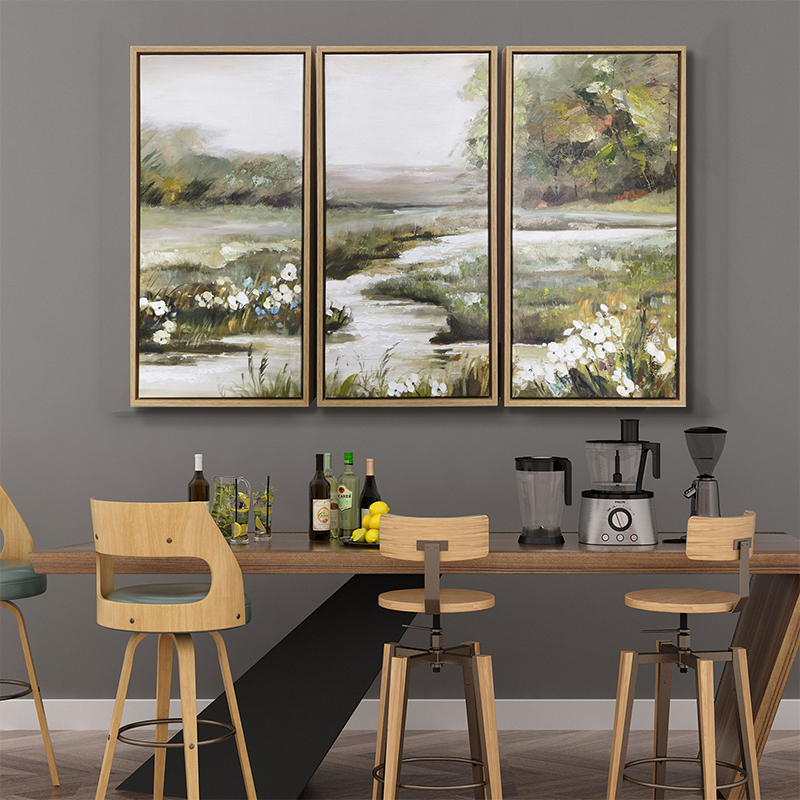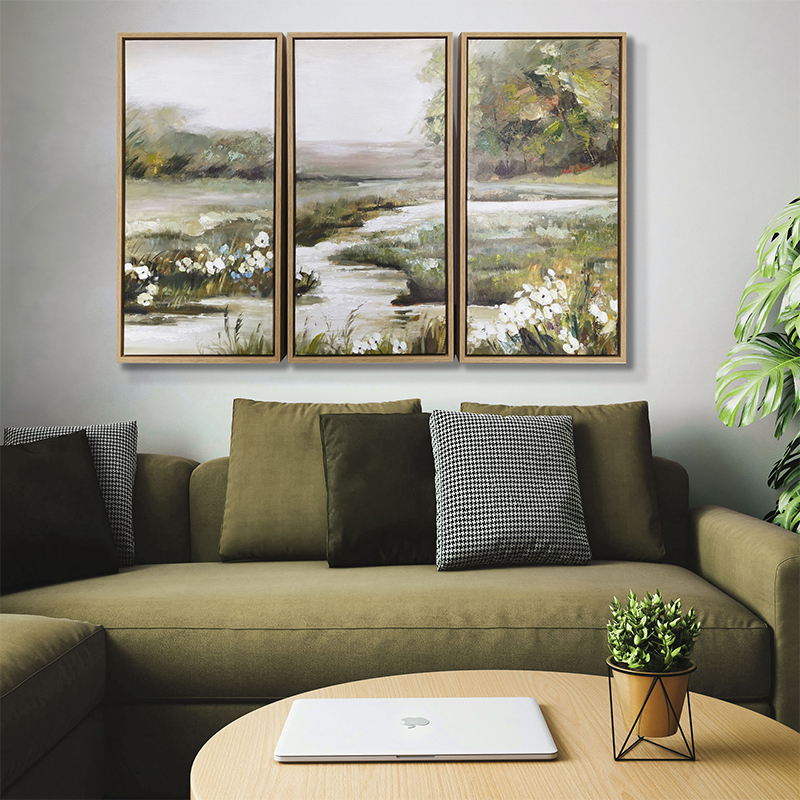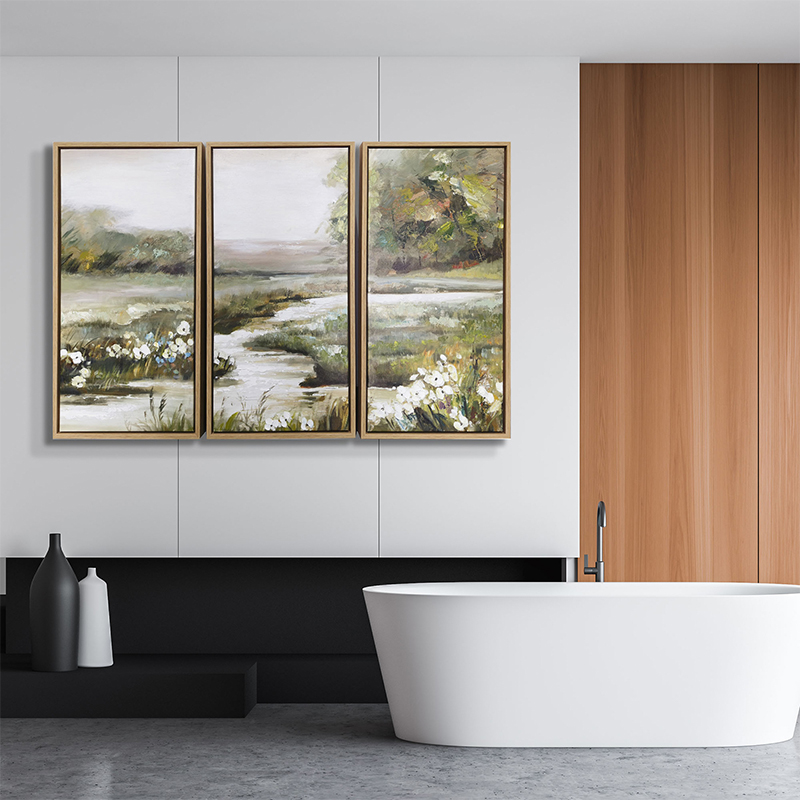The Silent Power of Nature on Your WallIn the rhythm of modern life, our eyes are constantly surrounded by glass, metal, and screens. Yet somewhere deep within, we still crave the presence of nature — a moment of stillness that connects us to something timeless.A set of three landscape paintings offers exactly that — a passage between the visible world and the emotional one. Hung side by side, these paintings seem to open a quiet doorway to another realm, where light, shadow, and texture create an atmosphere of peace and renewal.Each panel holds its own voice. The left painting begins with calm greenery and soft horizons, a gentle prelude to the story. The middle painting flows with a winding river, guiding the viewer’s gaze into the distance. On the right, golden tones and lush foliage bring warmth and vitality. Together, they form not just a scene, but a journey — a meditation on space, memory, and emotion.
A Dialogue Between Light and BrushstrokeThe beauty of landscape art lies not only in its visual representation of nature, but in the way it captures the essence of it.
Here, soft color transitions, diffused light, and expressive brushstrokes convey more than shape—they evoke air, depth, and tranquility.The artist leaves traces of movement within the paint, allowing each layer to breathe. The white flowers scattered across the field act like whispers of light, while the subtle river ties the three frames together in one continuous rhythm. This fluid composition doesn’t just depict nature; it lets nature happen on the wall.It’s this combination of imperfection and emotion that gives the paintings their living soul. Every time you look, you might notice something new—a hidden reflection, a tone of gold, or a suggestion of morning mist.
Art and Space: Creating a ConversationWhen displayed in a living room or a reading nook, the triptych transforms the entire mood of the room.
Its gentle tones and organic shapes balance modern interiors, adding depth without overwhelming the space.Whether paired with neutral walls, light wood, or soft fabric textures, these paintings harmonize effortlessly. In minimalist or Scandinavian interiors, they add warmth. In modern or contemporary homes, they bring softness and flow. The three-panel structure visually extends the wall, making even compact spaces feel more open and layered.More than decoration, these paintings become part of the home’s emotional architecture — shaping not only what you see, but how you feel when you enter the room.The Emotional Temperature of ArtArt has the ability to transform space not by dominating it, but by changing its rhythm.
In natural daylight, the soft greens and earthy tones of the paintings shift gently with time. Morning light enhances their freshness; in the evening, they exude calm and serenity.This dynamic relationship between artwork and environment mirrors the flow of life itself. The paintings breathe with the space — they invite rest, contemplation, and balance.
They remind us that beauty does not always shout; sometimes, it simply exists quietly in the corner of a room, waiting for your attention.
The Worlds Within the PaintingsLandscape art is often described as a “window to the soul.”But perhaps, these three paintings are not just windows — they are mirrors.Each viewer finds a different world within them. Some see a peaceful morning meadow, others see the echoes of memory. Some find energy in the flowing river, while others find calm in the distant horizon.So when we ask, “How many worlds are hidden within the canvas?” —The answer is never fixed.
Every gaze, every moment of reflection, creates a new one.
The world within the painting is the world within you.



